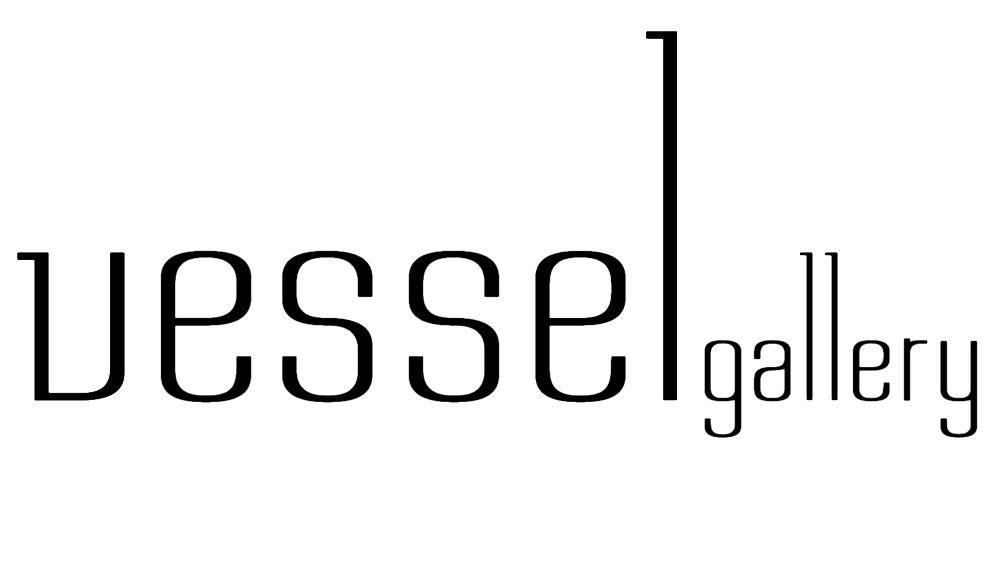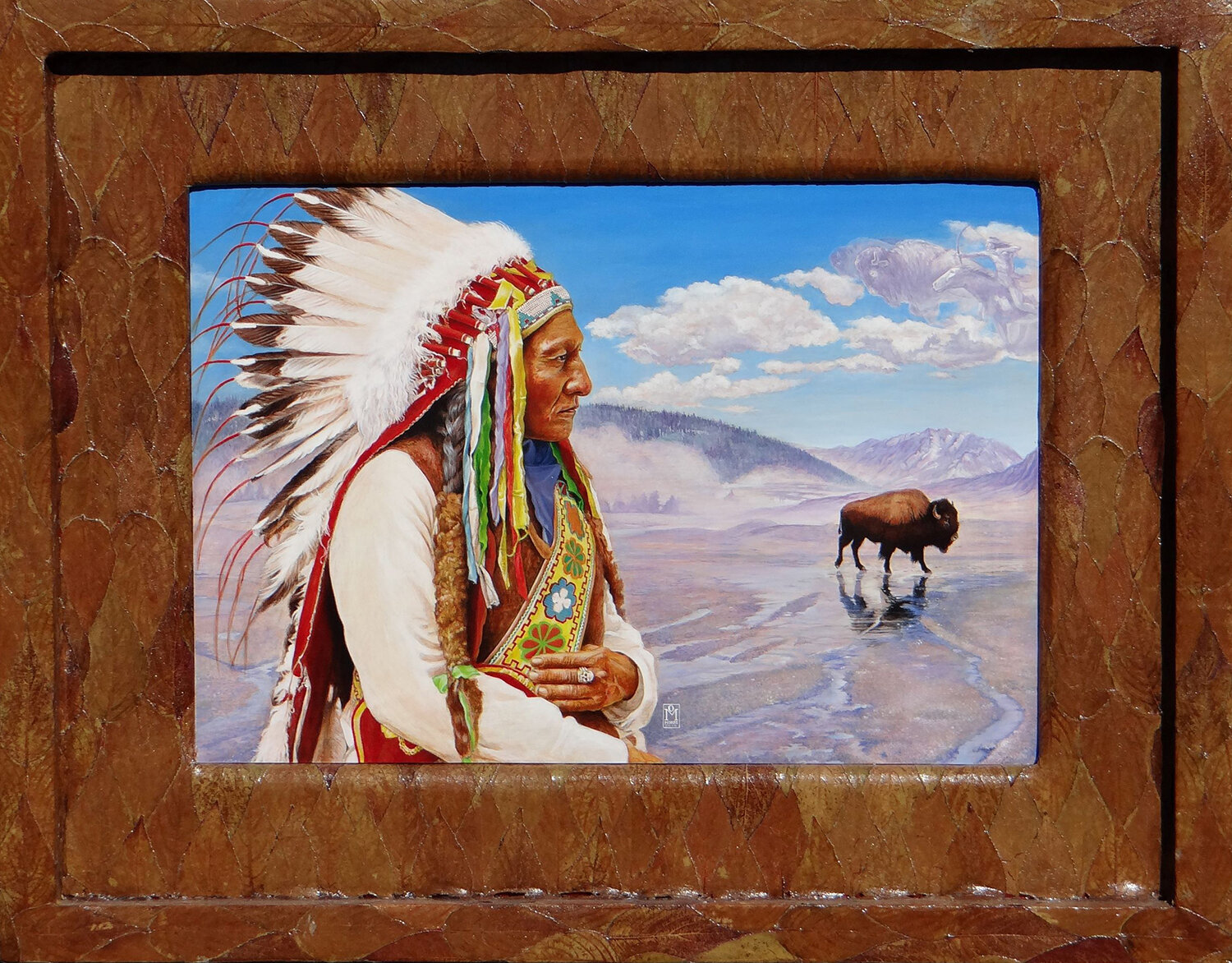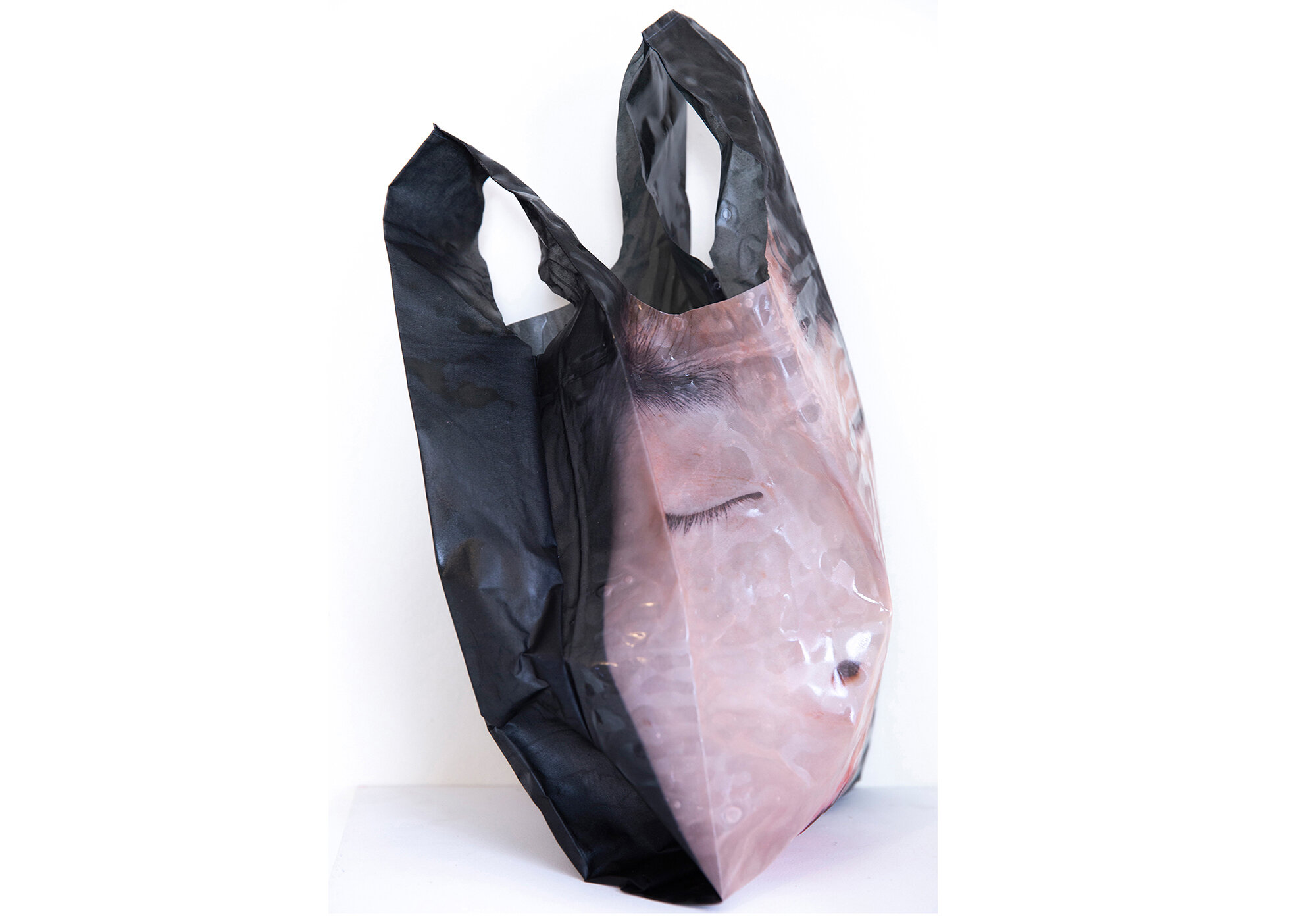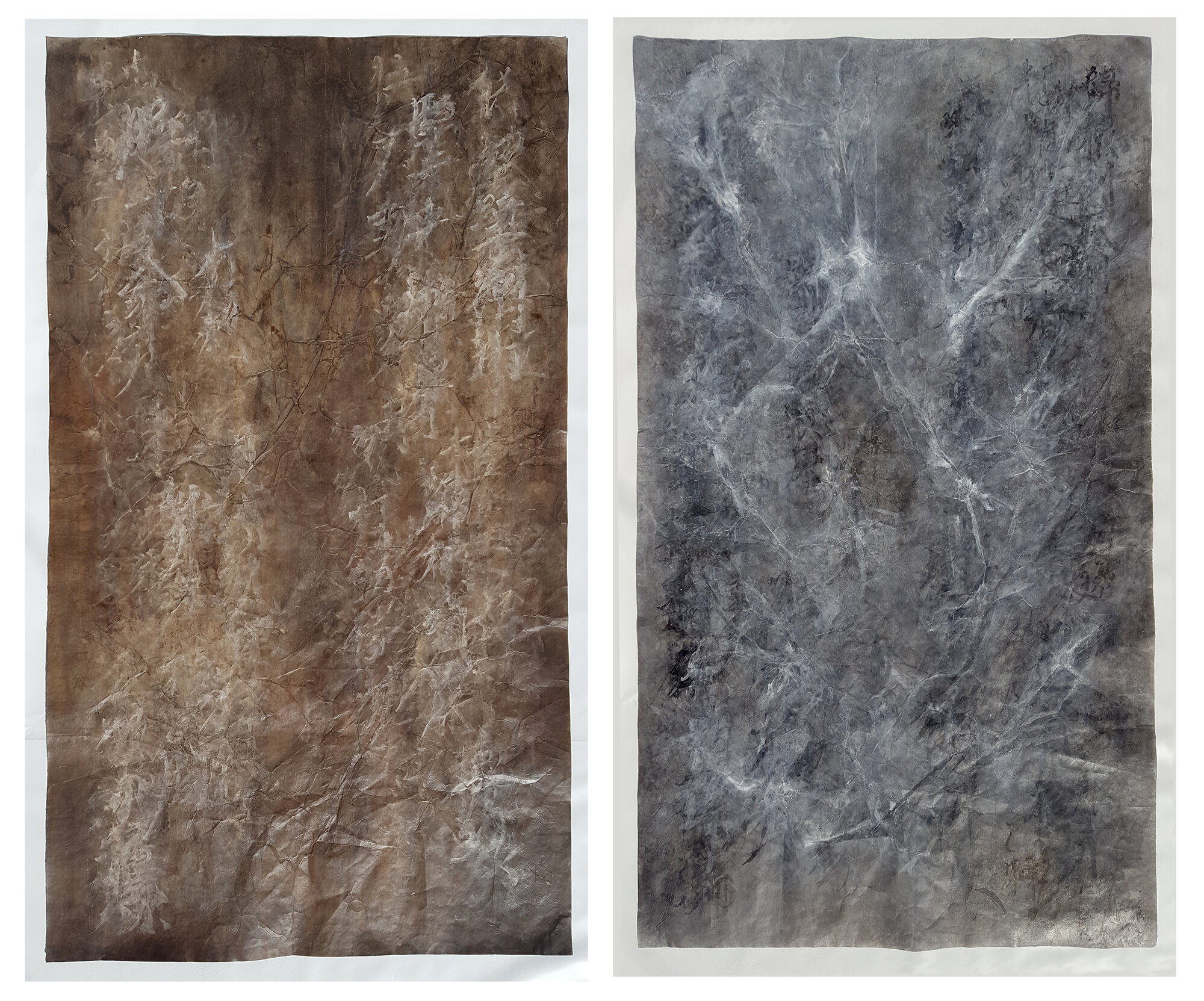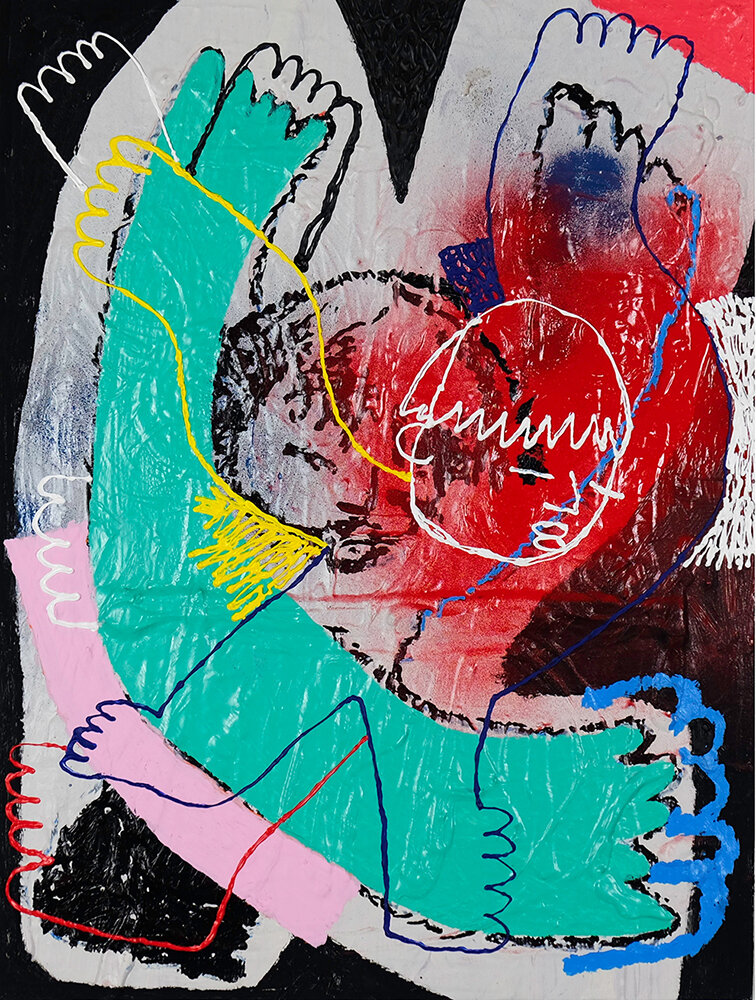SCROLL DOWN TO SEE ENTIRE SHOW
Vessel Gallery presents a group exhibit Excuse Me Can I See Your ID - Two featuring artworks by:
Cherisse Alcantara, Kevin Balcora, Kristi Chan, Nimisha Doongarwal, Kacy Jung, Michael Hyun Gu Kang, Hyeyoung Kim, Chandrika Marla, Omid Mokri, Melissa Wang
ARTIST TALK I: Saturday, May 15, 2PM, Zoom Webinar, click for Details
ARTIST TALK II: Saturday, June 12, 2PM, Zoom Webinar, click for Details
ANNOUNCEMENT: As a follow-up to this online exhibition an installation will be available to see in person
September 23 through December 18 - Group Show Excuse Me Can I See Your ID - Two
A Vessel Satellite exhibition at the Alice Collective (Vessel’s annex gallery space)
By Appointment, you can use our BOOK NOW to schedule your visit!
CURATOR’S STATEMENT
This second installation of Excuse Me Can I See Your ID sets out to go beyond the AAPI Heritage Month by celebrating AAPI artists for nearly three months. The first installation explored Asian American identity, and its complexities and nuances, through art and film. Four years later, much has happened in the world, and I continue to explore how the title contains an open entry point to inquisitive curation, allowing questions about identity, highlighting individuation of artworks presented, and a reexamination of the title’s question.
This exhibit title piques curiosity in the viewer, and provides an opportunity for artists to self-reflect, and we all participate in the anticipation of what comes next. Who asks this question? Does it imply somehow your identity will reveal more about you, your citizenship, your legal right to be wherever - or whoever - you are; are you being interrogated to show proof? Does it focus on the notion of age? Are you trying to get access somewhere, to buy liquor or weed? Did you commit a traffic violation? Which ID are we talking about? Do you belong? Do you not belong? How might these questions impact the art making practice?
Can we contextualize what it means to be AAPI and live in these times, with such scrutiny, or empathize with encountering such questions of interrogation, just for being? How do AAPI artists examine identity during this rise in anti-Asian sentiment; this deeper notion, that we are outsiders; “othered”; perpetual visitors no matter our American citizenship, whether by birth or naturalized? Immigrant or born here, BIPOC, AAPI, we are not secondary citizens. We are human. Yet we somehow are united under this ideal that “all men are created equal” and paradoxically negotiate the truth of this idea with opposition in our daily lives. Breaking these social conditions and historical patterns of othering starts at home. Vessel Gallery brings forth this group show but does not relegate showing AAPI artists one time a year; we include AAPI artists throughout our programming beyond any one month.
Can we make art and not have to perceive or examine notions of identity, or existence of “Asian American Pacific Islander" art? Questioning identity or confronting racism can cause a host of reactions. In this show I hope to present expressions that show how we respond as AAPI artists. Do we react and articulate this in visual language? Retreat? Ignore? Do we allow the perpetuation of socially imposed stereotypes like the “model minority” to continue, or do we disrupt those deeply rooted and damaging myths? These insightful, resilient, courageous artists are a sample of productive and expressive individuals adding to the larger conversation about identity and belonging during a very chaotic and tenuous time of world pandemic. Please be sure to join our two artist talks for this show, which are sure to be invigorating, insightful, and inspiring.
Acknowledging the social context and framework under which AAPI artists live in and create, our task is to receive their works for what they are, and to celebrate the individuation of each artist and their distinct voice, one that is precious, unique, and whose identity is integrated both consciously and on a subconscious level. While it is true that “Asian” is not a monolithic existence, we are quite diverse in heritage under AAPI. It is my hope that we can continue to come closer together to support and protect one another from violence and harm, and to unite in solidarity in our individual communities by sharing the spirit of individuation amidst our diverse cultural and visual arts communities.
In search of equity, we must know one another’s stories and stand up against discrimination, understanding our responsibility to stand in solidarity for all our brothers and sisters - Indigenous, Black, Muslim - while not falling into the trap of being a victim. Our righteousness is to uphold the rights of all humankind and to live in harmony with one another. Through this collection of works I am seeking greater openness for individuation, and in the end, freedom for all through harmony, loving kindness, compassion, empathy, and equanimity. We are excited to shine a light on ten Bay Area AAPI artists by presenting Excuse Me Can I See Your ID - Two and create a path to connect and understand something deeper within ourselves. — Lonnie Lee, curator
“If art cannot engage with life, it has no future” – Ai Wei Wei, 1000 Years of Joys and Sorrows
Sitting Bull by Omid Mokri | 20 x 20 in. | Pulverized colored pencil paint on handkerchief < Click to collect the artwork >
Thathanka by Omid Mokri | 21 x 27 in. | Acrylic, Panel, Cardboard, Leaves < Click to collect the artwork >
Statement
ART IS MY HOME Where there is no door, no barrier, it doesn’t have boarders, no walls, no bars!
Where I am able to navigate powered by my creativity, to find my true passion and love, my art.
I continue my journey in life through my art, where I can fly like a beautiful butterfly, showing my
Powerful wings made of intense form and color that define and cloak me. This is my habitat, where
I live. And this haven has kept me alive.
Grocery bag (2020) by Kacy Jung | 21 x 12 x 6 in. | Printable fabric and resin
Statement
The Chinese Exclusion Act of 1882 was the first law restricting immigration to all members of a specific ethnic into the United States. Despite the fact that the Chinese made up a mere .002 percent of the nation's population, many Americans blamed them for depressed wage levels.
After almost 130 years, it is now 2021.
The number of Asian Americans has grown to 5.6 percent of the nation's population. Some things have changed, but racism has not. Added to the shifting domestic labor market, anti-Asian racism increased dramatically after the pandemic since last year. Even though history has demonstrated that immigrants are not the cause of domestic problems and discrimination would never resolve them, immigrants are always scapegoats and punching bags.
" Go back to where you came from!" they said.
Today it seems that Asian Americans and all people of color are still treated like disposable tools in the United States -- we are expected to be heavy-duty, low maintenance, and facilitate daily life. At the beginning of the immigration wave, immigrants were workers in mines, railroads, farms, factories, fishermen, and other labor-intensive activities that were important for the country's development, but not most people were willing to do.
To me, "Asian American art" is not about an aesthetic choice; it is about providing a different viewpoint from the narrow Western lens rooted in imperialism. We no longer live in colonial times but in a time of modern globalization. The outdated notion of exploitation simply doesn't work anymore, and changes are on demand. It is not only about we v.s. them or Western v.s. Eastern; it is also about WE, we the people. As humans, we are all part of this global village that is constantly changing. We need to learn how to adapt together, evolve together, and connected together if we ever hope to survive as a species. Our duty is to make our voices, ideas, and stories heard, to make history, and to make the world a more inclusive place.
Free Will Is an Illusion performance (2020) by Kacy Jung | Performance
Statement
This performance piece, "Free Will Is an Illusion" is inspired by my immigration experience. Seeking a better economic opportunity, I moved to the US for my Ph.D. degree in biomedical science. As an Asian immigrant living in the United States, I still remember how struggled it was to adjust to the new environment. The individualism, the foreign language, a diverse but inequitable culture are all pretty new to me.
The conflicts caused by living between Eastern and Western culture raised some fundamental questions: Why couldn't I see where I fit between these two cultures? What factors could I identify myself? What are the battles of the reformation of my new identity? Why the harder I try to fit in, the more detached I become from myself, my roots, and my hometown? What should one sacrifice to live a better life in another country? What is a better life?
The technique to manipulate images digitally and the printable semi-transparent fabric is used in my work "Free Will Is an Illusion" to investigate these questions visually. The choice of material not only highlights the idea of social fabric but also emphasizes the fluidity of identity. Although it may only show a simple surface outside most of the time, there are complex and interdependent interactions and wrestles inside.
The Borderspaces: spaces I inhabit No. 1 (2020) by Cherisse Alcantara | 30 x 40 in. | Oil on canvas < Click to collect the artwork >
Play Invisibility (2020) by Cherisse Alcantara | 40 x 48 in. | Oil on canvas < Click to collect the artwork >
The Borderspaces: spaces I inhabit No. 2 (2020) by Cherisse Alcantara | 30 x 40 in. | Oil on canvas < Click to collect the artwork >
Statement
Through spaces and landscapes, I reflect upon place, identities, and the shifting concepts of home in my ongoing and parallel series of paintings and works on paper, Portal, and Borderspace. The ideas and themes behind my works are very much rooted in my lived experiences as I search for meaning and positivity amidst the multiple and shifting in-between spaces. I ask myself what is it like to be me: to think from the mind and body of an immigrant who has lived in California for many years; as an Asian and Filipina-American woman in diaspora coming to a post-colonial society; and lastly, the adoptee experience which is often unacknowledged. These are overlapping and confusing experiences, which I make sense of in my art and continue to reassess through the years.
I am inspired by various scholars who gave voices to these experiences, calling them the margins and the borderlands, which they described as a psychic space that the woman of color navigates. For instance, being wedged between the first and second-generation Asian-Americans and between conflicting traditional and American values and languages, marginalization happens in both arenas for me—within the dominant society but also within my immediate community and family with its intergenerational conflicts and expectations. The liminal space becomes a place where one belongs nowhere.
For me, biculturalism is hardly a balancing act of conflicting beliefs because that becomes almost impossible. Rather, it can be a path of creating a new consciousness, so the margins becomes not just a place of alienation but also of self-emancipation. The color spaces, oftentimes with luminosity, are like the opening of a window and a creation of a third space which one can claim and transform.
The familiar yet unfamiliar are alluded to as the spaces are re-imagined. The recurring abandoned architectural spaces, caverns and ancient trees all carry a sense of time and erosion by the elements. As I paint them, they are filtered through affect where feelings of loss, melancholia, and alienation are projected through the colors and composition.
As I am thinking about a non-linear remembrance and memory of home, it is significant that the images are located from my hometown around Northern California. For instance, while visiting the Redwood groves in the Bay Area, I am reminded of the ancient Acacia trees from Luzon island where I grew up in. Like the caves, they are sacred in pre-colonial times, serving as portals to the unknown. While the negative spaces in the most recent portal works are inspired by native Lingling-o amulets. As I am living my everyday life, I get sudden insights or recollections of the past—the personal and the historical, the past and present intertwine. To make sense of home is to acknowledge the past one carries while giving it new meaning and forms of expression.
San Pai Ji : 01 "Siu Tou” | 神牌字第一 : 小土 (2021) by Kevin Balcora | 黃兼鋒 | 38 x 54 in. | Acrylic, soot ink, graphite, tea on paper, two-sided artwork < Click to collect the artwork >
San Pai Ji : 02 "Daai Tou” | 神牌字第二 : 小土 (2021) by Kevin Balcora | 黃兼鋒 | 42 x 61 in. | Acrylic, soot ink, graphite, tea on paper, two-sided artwork < Click to collect the artwork >
Statement
These paintings feature idiomatic phrases and colloquialisms from the Toisan and Cantonese Chinese dialects. The calligraphy, though resembling Chinese, is actually written with an invented phonetic system. Written Chinese is notoriously an exercise in memorization, with no alphabet. The orthography is primarily logographic, specifying unique characters for each word. This system has the advantage of maintaining readability across mutually unintelligible dialects and languages, though with the consequence that written words don’t necessarily reflect how people speak. I selected characters based on dialect pronunciations to form an abugida, a system where consonant-vowel sequences are written in a single unit.
I begin paintings by preparing paper on a flat surface, writing phrases in traditional Chinese characters, then obscuring them under characters from this abugida. Then I emboss the combined traditional+invented characters by outlining their amalgamated form using a hard leaded pencil. There are no phrases to be focused on, as hundreds have been written and buried into the paintings. I pursued these methods to convey my sensibility about the fragmentation of my own cultural background, as I approach Chinese calligraphy from the perspective of language loss. These works are part of an ongoing process to relearn Toisan and Cantonese, and ultimately to ensure that I participate in them continuing to be living languages.
In many Chinese diaspora communities, it is still common to maintain an ancestral shrine featuring tablets with the names of ancestors, spirits, and personally meaningful phrases. These are called San Pai Ji. These paintings share that title, in veneration of this language that so specifically points to an epicenter of emigration, and the thousands of untold stories within it’s vernacular domain.
Self, Reflecting (2020) by Hyeyoung Kim | 44 x 36 in. | Archival pigment on silk, hand-made double wooden box frame, quadriptych
Intertidal 1 (2020) by Kristiana Chan | 36 x 20 in. | Kelp lumen print positive
Intertidal 2 (2020) by Kristiana Chan | 36 x 20 in. | Kelp lumen print positive
Statement
Using camera-less alternative photography, these images were printed on site at low tide at various reefs in Santa Cruz and Monterey county. Considering the maternal associations of the ocean, I hoped to allude to the dream-memory of being in the womb. Depicting a kelp body who thrives in briny waters not so unlike a human womb environment, this image is part of an ongoing series that recalls the maternal and ancestral lineage of the ocean.
Bodies of Water (2019) by Kristiana Chan | 7 x 10 in. | Installation still
Bodies of Water (2019) by Kristiana Chan | Archival audio and video collage
Statement
Exploring water as an ancient medium of memory, I attempt to capture traces of the lives previously lived in and around specific bodies of water, in this case, the lives of early Chinese fishermen in California who were relegated to the shores of the Bay Area to find subsistence and work. Using archival and recorded video and sound, Bodies of Water address the sea as a maternal entity, offering the viewer passage into the aquatic unconscious, transporting us to the past, present, and unseen worlds that lie below the surface of the psyche.
Expansion (2020) by Chandrika Marla | 48 x 40 in. | Acrylic on canvas < Click to collect the artwork >
Expansion
I paint parts of the feminine form, and in this painting, an abstract breast cannot be contained and has moved beyond the boundaries of the canvas. We are always stretching, reaching, to make things work and to reach new heights. There is no end in sight. We keep reaching.
Caution To The Wind (2020) by Chandrika Marla | 48 x 40 in. | Acrylic on canvas < Click to collect the artwork >
Caution To The WInd
The abstract breast-shaped form is confined, though spilling out to an area that isn't visible to us. We are forced to imagine where the orange form ends, and the possibilities are endless. I chose these colors as an homage to the orange popsicles we ate after school every day in New Delhi. A memory of simpler days, when our needs were few and were easily met.
I wanted to talk about our covid restrictions, of confinement, being boxed and solitary, being singled out, but also stretching towards...anything. While I talk about the shapes, I also need color/emotional inspiration. Here's a story I wrote about the colors of this work on Instagram:
Thinking of those hot summer days after school in Delhi, when we would desperately search our pockets for 55 paise to get an ice-cold orange bar. And then a mad dash to the ice cream cart near the school buses followed by a short-lived state of bliss while we competed to suck out all the color from the frozen popsicle. On that 105 degrees afternoon, you had to work really fast or there were...big losses. Huge chunks could slide off onto the not-pristine whiteness of your school uniform. And finally, our bizarre but happy orange lips were clown-like but ready for the bus ride home. Everything looked more tolerable for a while because....we were happy orange people.
For Our Lives (2018) by Chandrika Marla | 40 x 40 in. | Acrylic on canvas < Click to collect the artwork >
For Our Lives
In early 2018, my paintings were colored with thoughts of empowerment, women's marches, support, and renewal. The urgency to take action hit home when my twelve- year old chose to be a part of the National School Walkout organized by the teenage survivors of the Parkland shooting in Florida. Our neighbors and friends were so moved to see these young children be the harbingers of change, and it was inspiring to watch them fight for revolutionary but sensible gun laws. The two shoulders in this painting portray our children, their determination, and their bold plans for a safer America.
Artist Statement
My work explores identity and is inspired by women and their relationships with others and with their own selves. In a previous career, I was a fashion designer - an experience that left me with a visual vocabulary of the female body. Today, my paintings refer to obvious parts of the feminine form. I paint the soft curves of a woman’s shoulders and breasts in simple shapes and the bold and bright colors of my native India.
I also want to show that there are parts of us that are missing. How does one find completion? How does one become whole? What has been lost along the way?
As I paint, I use my memories of events, conversations, and feelings and what I call “accidental color”, to compare relationships between people, the outer and inner self, the individual, and society. Do the colors live peacefully together? Are they agitated? How do they make me feel? The soft, blurry line where the colors meet is the place where these thoughts come together. But it is neither clear nor defined.
I have always been inspired by Rothko and find myself dwelling on his words, “We are for flat forms because they destroy illusion and reveal the truth.”
Bridge Between (2020) by Melissa Wang | 24 x 24 x 1.5 in. | Acrylic on canvas < Click to collect the artwork >
Dreaming Moon (2020) by Melissa Wang | 16 x 20 x 0.5 in. | Acrylic on canvas < Click to collect the artwork >
Statement
My abstract artworks are visual speculations of life throughout the cosmos. I scrape through paint to reveal light-and-dark layers; bright gold shapes hint at indeterminate horizons. These process-driven compositions explore the ontology of consciousness, offering a dialectic between “wonder and estrangement” (Chen Xiufan). Holding in tension our hopes and fears, who do we become in this vast, chaotic and ever-changing universe?
Portrait of Colonization (2020) by Nimisha Doongarwal | 12 x 12 in. | Mixed media collage and acrylic paint < Click to collect the artwork >
Who am I? no. 1 (2020) by Nimisha Doongarwal | 36 x 36 in. | Photo transfer, collage, and acrylic paint < Click to collect the artwork >
Who am I? no. 2 (2020) by Nimisha Doongarwal | 36 x 36 in. | Photo transfer, collage, and acrylic paint < Click to collect the artwork >
Statement
Mixed media artworks Nimisha creates are grouped inventories of fragments: paintings, photographs, fabrics, and digital prints. The work explores the varying relationships between past and popular culture by referencing Indian and British history. Every image tells a unique story by creating visual links to history and reality. The portraits she creates have a new abstract identity, which emphasizes the cultural and traditional overlap, people around the world went through over the centuries. This overlap has made people extremely similar, irrespective of the varied physical appearances. Through her works, she wants to encourage people to embrace cultural diversity and reduce prejudice against groups based on color, race, religion, appearance, and so on. Her goal is to give a voice to social issues immigrants face around the world through her art and advocate awareness.
Help Me (2020) by Michael Hyun Gu Kang | 50 x 40 in. | Acrylic and oil pastel on canvas < Click to collect the artwork >
Statement
The past couple years have been a difficult time for me and others and the painting "도와 줘", comes from that place. I wanted to paint a figure trapped, trying to run away, while simultaneously protecting himself from harm. It's a reaction to helplessness, doing what I can, but still needing support
Shelter (2020) by Michael Hyun Gu Kang | 96 x 72 in. | Construction materials, studio refuse, traditional Korean fabric, and mixed media on collaged frame < Click to collect the artwork >
Statement
I created this collage after the first few months of shelter in place. I created a figure protecting itself from everything. I felt the need to protect my health, physically and mentally. I draped this figure in Korean fabric and watched the wind blow through the piece. It reminded me of Han and how our ability to survive suffering was a part of what made me who I am. I found solace in the cold and the difficulties the past 24 months have held for me.
Spectator (2021) by Michael Hyun Gu Kang | 24 x 18 in. | Acrylic on wooden panel < Click to collect the artwork >
Statement
During 2020 I painted many figures dancing. I was chasing the feeling of freedom that we all lost limited by the pandemic. This is one of those figures having an out of body experience as they're dancing. You see one figure falling to the ground as its soul leaps forth.
Running through Mud (2021) by Michael Hyun Gu Kang | 36 x 36 in. | Acrylic, oil stick, colored pencil, and oil pastel on canvas < Click to collect the artwork >
Statement
This painting is part of a series that acknowledges existing between past, present, and future. I wanted to show a figure wrestling through time and space. It hinges on the idea that my identity doesn't only exist in the past, but also in the present. It is this simultaneous existence that made me understand that my identity isn't about being more Korean or more American, but instead, it is about being both and creating an entirely new definition.
Click to view artist bio & ruminations
< Subscribe to Vessel Gallery >
< Contact us with any questions >
CLICK BOOK NOW TO SCHEDULE AN IN-PERSON OR VIDEO CHAT APPOINTMENT
